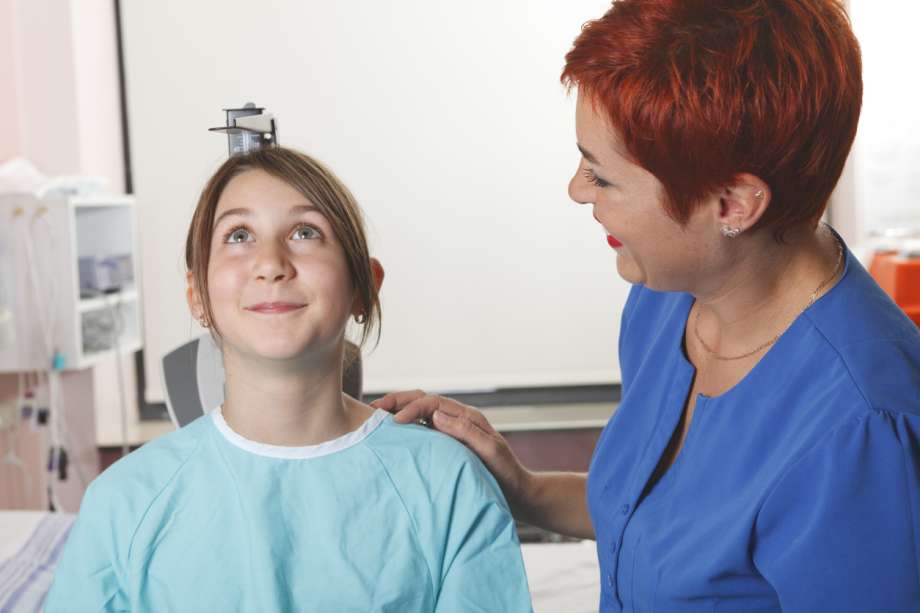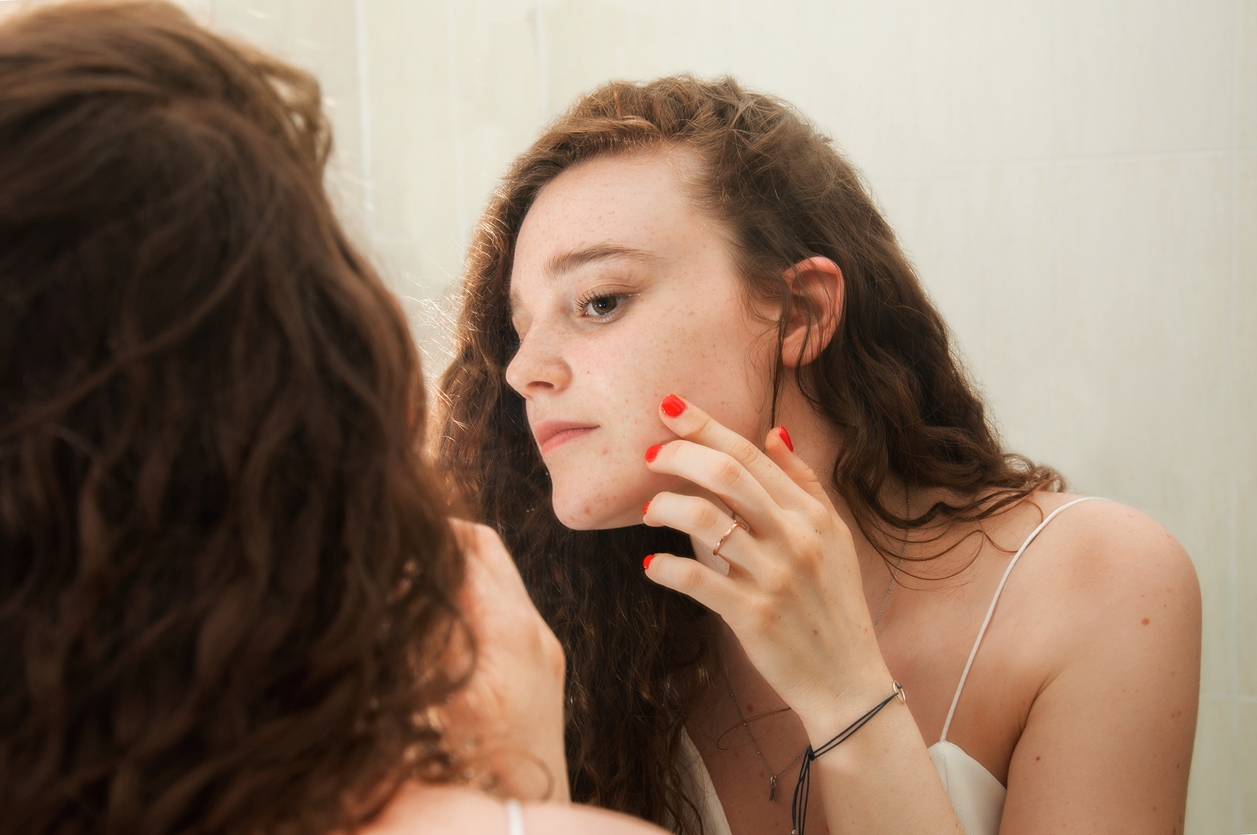Do Girls Stop Growing When They Get Their Period?

Is your child going through a growth spurt right now? Have they hit puberty? When will they stop growing?
These are all vital questions that parents (and even children) may have when it comes to the teen years and everything that it entails...we know it’s a lot!
For girls, a lot of attention is put on when they get their first period and how this affects their height and overall growth. Some girls start their menstrual cycle early, while it takes others longer to get their first menstrual period.
Puberty is a confusing time, so we answer all your questions about menstruation, height growth and other physical changes with input from Shari Nethersole, a physician at Children's Hospital, Boston, and an instructor in Pediatrics at Harvard Medical School.
Ask an Expert: Do You Stop Growing Once You Start Your Period?
Q: Hi, I am almost 13 and I just got my period 3 months ago and I am only 4' 11". I heard that when you get your period you don't grow very much anymore. I was wondering if there is any way that you can figure this out scientifically (my mom is 5' 3" and my dad is 5' 5").
A: It is true that a girl’s growth slows down once she starts her periods, but it doesn’t stop completely.
For the next two years after the period starts, there is usually a little bit more growth, about one to three inches. There are usually not large growth spurts once the period starts.
There is a formula that we use in pediatrics to estimate the size one expects a child to be, based solely on the parents' height. This is called the mid-parental height. It does not give an accurate prediction of a child’s ultimate height but does give a range, based on genetic factors. If either of the parents had health problems as a child, then this estimate may not be accurate.
The way that this formula works is that if the child is a girl, you subtract five inches from the father’s height, and then average the result with the mother s height. This average is the mid-parental height, and you would expect the child to be within a few inches of this height (either above or below) as an adult. For a boy, you add five inches to the mother’s height and then average it with the dad’s height.
Based on your parents' heights, your mid-parental height is 5' 1-1/2" give or take 3 inches, so we would expect your height to be in a range from about 4' 10" to 5' 4". In other words, you should not expect to be a lot taller than you already are, but you may grow a few more inches.
Puberty Rates Among Boys and Girls
According to the American Academy of Pediatrics, girls usually begin puberty anytime between the ages of 8 and 13 years old. For boys, the onset of puberty can happen from 9 to 14 years old. When puberty starts before age 8 in girls and before age 9 in boys, it’s referred to as early puberty or precocious puberty.
Recent studies have shown that more girls have gone through puberty early since the COVID-19 pandemic hit. This is mainly believed to be caused by pandemic-led lifestyle changes that include:
- Changes in Eating Habits
- More Screentime
- Impact on Sleep Cycles

Being overweight or having high body fat can cause a girl to go through puberty earlier while being underweight can sometimes delay puberty. For many children, there are no underlying medical conditions that cause some to begin puberty earlier than others. It can just be something that happens.
If you suspect your child is going through puberty early, talk to your pediatrician. They may order a series of blood tests to measure different hormone levels as well as have an X-ray taken of the left hand and wrist.
This can estimate your child’s bone age. Children going through precocious puberty typically have a bone age that is more mature than their actual age.
Signs Your Child Has Started Puberty
In girls, signs of puberty at any age include:
- Development of breast buds
- Breast development and growth
- Underarm and pubic hair
- Acne
- Menstrual Period
- Growth Spurts
- Wider Hips
The signs of puberty in boys include:
- Deepening of the voice
- Penis growth
- Pubic hair
- Facial hair
Both boys and girls may start experiencing mood swings due to their hormones. This is a normal part of puberty. You may notice your child’s mood change more frequently and randomly as your child tries to deal with strong emotions that they may have never had before.
It’s important to be patient during this time and help them sort through all of the emotions and changes that their bodies are going through.
While all of these signs may not appear at once, when one or a few begins popping up, your child is starting to go through puberty. Once girls begin puberty it can last anywhere from 2-5 years. For boys, it’s usually 3-4 years.
Growth and Menstruation
Typically, girls stop growing around 1-2 years after they get their period but this isn’t always the case.
According to the American Academy of Pediatrics, the fastest rate of height growth in girls happens between when breast buds start to form and about 6 months before they get their period. The average age for a girl to get her first period is 12, but that age can vary from child to child.
Many girls tend to have their fastest growth spurt around age 11 or 12. But it’s important to remember that everyone is on their own clock when it comes to growth and development. That growth spurt can come earlier or later.
Do Girls Stop Growing When They Get Their Periods?
During their fastest growth spurt, girls can grow 1-2 inches until they start their periods. After this initial spurt, a smaller one can usually happen after girls start menstruating. They may gain another 1-3 inches toward their adult height. Gaining much height after that is less common. This is typically when you can see your child’s final adult height start to emerge.
Toward the end of puberty, a child’s growth plates will close as their bones stop growing and the cartilage hardens to solid bone. For girls, this is usually around 12-15 years old.
When Do Boys Stop Growing?
Boys tend to grow the most between ages 12 and 15. On average, boys stop growing by age 16 as their growth plates close later than girls. Boys' muscles will also continue to develop even after their bones have stopped growing.
Why Do Girls Stop Growing Earlier Than Boys?
A boy’s growth spurt begins about 2 years later than girls. Since girls tend to start puberty sooner than boys, they tend to stop growing and reach their adult height sooner as well.
Does Starting Puberty Earlier Affect Your Height?
Many parents worry that starting puberty early will impact their child’s growth. Children dealing with precocious puberty often stop growing earlier than usual because their bones mature more quickly. They may grow quickly at first and be tall, and then stop growing. This can cause them to reach a shorter-than-average height as adults.
Factors That Impact a Child's Health
The onset of puberty is not the only factor that can impact a child’s height and determine how tall they will be as adults. There are also other factors that have nothing to do with when puberty starts, but still impact a child’s height.
-
Nutrition
Children who don’t eat the right foods or who are malnourished may be shorter during childhood.
But, with a balanced diet and nutrition, they can catch up to reach an average adult height.
-
Medications
Some medications, such as corticosteroids, can slow growth. It’s important to talk to your child’s doctor about potential side effects if your child is on medication for a long time.
-
Hormonal Imbalances
If your child has thyroid issues or low growth hormone levels, these can lead to slower growth rates and shorter final adult height. Any condition that affects the pituitary or thyroid glands, which produce the hormones needed to grow and develop, can delay puberty.
-
Genetic Conditions
Children with genetic conditions such as Turner or Noonan Syndrome can typically be shorter than their peers. Those with Marfan Syndrome tend to be taller.
-
Family Genetics
Genetics can also play a role in height. If a child has significantly shorter parents, it’s highly unlikely they will grow to be six feet tall. All of these factors need to be considered when looking at how tall your child will be. Likewise, if a child has very tall parents, there is a good chance that he or she will follow the pattern.
How to Know Your Child Has Stopped Growing
While it can be difficult to know when your child has stopped growing, some signs indicate they may have reached their adult height. These include:
- Started menstruating within the last 1-2 years
- Pubic and underarm hair has grown in fully
- Growth has slowed considerably over the past 1-2 years
- Breasts and hips are fuller
- Genitals are fully developed
- Lost some of their baby features such as a round face
Since growth patterns differ from child to child due to many factors, genetics included, expectations for overall growth based on age are determined by researchers who have studied healthy populations of children. The Centers for Disease Control recommends using CDC growth charts for children ages 3-19.
What to Do If Your Child is Not Growing
Many parents worry that their child is not growing according to the average timeline. It’s important to remember that children grow at their own rates. But, if your daughter hasn’t gotten her period by age 15 or hasn’t shown any signs of hormonal development, you’ll want to contact your healthcare provider.
There could be an underlying medical condition, malnutrition, or hormonal imbalance that needs to be addressed with your pediatrician.
Before age 15, try to be patient. There is a wide range of what is considered normal when it comes to puberty and growth patterns.
Periods and Height
When you’re looking at puberty, periods, and growth patterns, it’s most important to realize that all children mature at different rates. Girls typically begin puberty anytime between the ages of 8 and 13 years old, while the onset of puberty for boys can happen from 9 to 14 years old. When puberty starts before age 8 in girls and before age 9 in boys, it’s referred to as early puberty or precocious puberty.
Once a girl has had her first period, she will likely grow another 1-2 inches. Gaining much height after that is less common. Since girls tend to start puberty sooner than boys, they tend to stop growing sooner as well.
Other factors can impact your child’s adult height including nutrition habits, illnesses, medications, and hormonal imbalances. Any of these factors should be discussed with your pediatrician.
You may also want to talk to your pediatrician, if you notice that your daughter hasn’t gotten her period or shown any signs of hormonal development or growth by age 15, to make sure there are no health problems at play. If your daughter is under 15, be patient, and let nature take its course!
Remember, every child develops and grows at their own pace. But, if you ever have any concerns about your child’s development, talk to your pediatrician to make sure there are no underlying conditions so that you can ease your concerns.
For more information on helping your teen girl navigate changes during puberty get our Personal Hygiene Tips and Checklist for Tween Girls!

